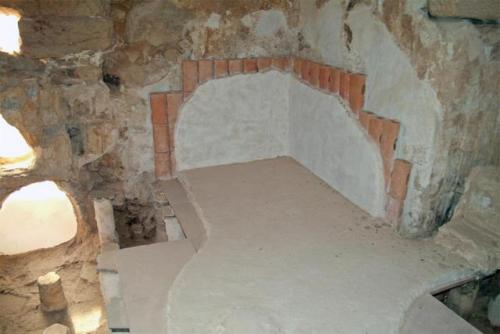italianartsociety:ByJean Marie CareyOn 16 April 73, legions of the Roman Empire penetrated the mount
italianartsociety:ByJean Marie CareyOn 16 April 73, legions of the Roman Empire penetrated the mountaintop fortress of Masada, in the Roman province of Judaea (what is today Israel). Thedefenders of Masada, a group of Jewish rebels called the Sicarii, had held off the RomanEmpire for three years. The Fall of Masada marked the end of the rebellion known as the Great Jewish Revolt, but became a powerful symbol of resistance and resilience. The dramatic story of Masada, related by Josephus Flavius, theJewish historian of the Second Temple period, coupled with the excavation ofthe remains of Masada, have made it one of the most famous archaeological sitesin Israel.According to Josephus, Herodthe Great fortified Masada between 37 and 31 BCE as a refuge for himself. In 72, the Roman governor laid a siege on Masada. Accordingto Josephus, when the Romans entered the fortress they discovered that its 960inhabitants committed mass suicide. Ever sincethe identification in 1838 of the isolated rock of es-Sebba withJosephus’ Masada, the site has attracted explorers and scholars. The most extensive excavations of thebuilt-up area on top of Masada and in the Roman siege camp were carried outby Yigael Yadin between 1963 and 1965. Supplementary excavations were conductedon top of Masada between 1995 and 2000 and in the Roman camps and at theassault ramp in 1995.Such studies confirm much of Josephus’ narrative. In addition, theextensive archaeological work conducted at Masada and its environs haveprovided a plethora of details regarding the exact chronological sequence ofoccupation, the various structures, and the material culture of everyday life.Scattered pot shards found in the caves on the northern escarpment of Masadadated to the Chalcolithic and the Iron Age periods testify to the earliesthabitation near the site. Amongthe structures built during the Herodian period, the most elaborate and richly-embellished ones were the western palace complex, used for ceremonial andadministrative purposes, and the three-tiered, northern villa-palace. Othermain structures included a wall constructed along the edge of Masadaplateau, an elaborate bath-house, storerooms, numerous water reservoirs on thesummit, and twelve large cisterns cut into the northwestern cliff of the site.Many of these structures were altered and adapted for dwellings during therebels’ occupation of Masada. The siege apparatus built by Flavius Silva in 73or 74, which is still visible and well-preserved today, comprised acircumvallation wall, eight siege camps, and an assault ramp. This apparatusperfectly fits the general course of the siege described by Josephus, andtherefore it most likely fulfilled its purpose in the attack on the fortifiedrebels on the mountain.The last phase of occupation of Masada took placeduring the Byzantine period, from the 5th to the 7thcenturies. At that time a small monastic community of hermits, the Laura ofMarda, settled on the hilltop, reusing some of the ruined Herodian structures. Theonly new building they constructed was the church compound, which wassubstantially preserved near the northeast of the western Herodian palace.Reference: Haim Goldfusand Benjamin Y.Arubas. “Masada.” The Encyclopedia of Ancient History. Hoboken: John Wiley &Sons, Inc., 2013. Oven and cooking pots from Masada, c.74. Israel Museum, IDAM Collection.Edward Lear, Masada on the Dead Sea, 1858. Fine ArtsMuseums of San Francisco. 1986.40 | FASF.64471.Herodthe Great Western Palace, Bathhouse, and Promontory Palace with Byzantinemodifications. Builtprobably 22-10 BCE, fortified between 37-31BCE, during the heyday of Herod the Great’sbuilding projects in Caesarea; modifications date to 324-638. Masada,Israel. Shmuel Magal, Sites and Photos.Further Reading: Mladen Popović. The Jewish Revolt Against Rome: Interdisciplinary Perspectives.Boston: Brill, 2011. JonathanEdmondson, Steve Mason, and James Rives. FlaviusJosephus and Flavian Rome.Oxford: Oxford University Press, 2005. -- source link
Tumblr Blog : italianartsociety.tumblr.com




